 Libri di Gregory Sholette su Unilibro.it
)
Libri di Gregory Sholette su Unilibro.it
)
|
|
2023 |
 Title :
L'arte dell'attivismo e l'attivismo dell'arte
Title :
L'arte dell'attivismo e l'attivismo dell'arteAuthor: Sholette Gregory Publisher: Postmedia Books € 19,00
Scontato: € 18,05
|
|
|
1918 |
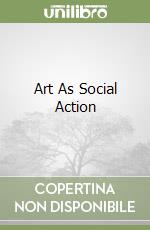 Title :
Art As Social Action
Title :
Art As Social ActionAuthor: Sholette Gregory (EDT), Bass Chloë (EDT), Social Practice Queens (COR) Publisher: Allworth Pr € 22,30
|
|
|
1917 |
 Title :
Delirium and Resistance
Title :
Delirium and ResistanceAuthor: Sholette Gregory, Charnley Kim (EDT), Lippard Lucy R. (FRW) Publisher: Pluto Pr € 25,20
|
 Title :
Delirium and Resistance
Title :
Delirium and ResistanceAuthor: Sholette Gregory, Lippard Lucy R. (FRW), Charnley Kim (EDT) Publisher: Pluto Pr € 122,20
|
|
1913 |
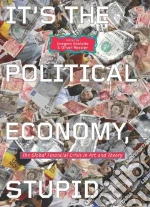 Title :
It's the Political Economy, Stupid
Title :
It's the Political Economy, StupidAuthor: Sholette Gregory (EDT), Ressler Oliver (EDT) Publisher: Pluto Pr It's the Political Economy, Stupid brings together internationally acclaimed artists and thinkers, including Slavoj Žižek, David Graeber, Judith Butler and Brian Holmes, to focus on the current economic crisis in a sustained and critical manner. € 28,70
|
|
|
1910 |
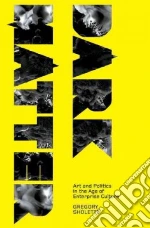 Title :
Dark Matter
Title :
Dark MatterAuthor: Sholette Gregory Publisher: Pluto Pr Art is big business, with some artists able to command huge sums of money for their works, while the vast majority are ignored or dismissed by critics. This book shows that these marginalized artists, the "dark matter" of the art world, are essential to the survival of the mainstream and that they frequently organize in opposition to it. Gregory Sholette, a politically engaged artist, argues that imagination and creativity in the art world originate thrive in the non-commercial sector shut off from prestigious galleries and champagne receptions. This broader creative culture feeds the mainstream with new forms and styles that can be commodified and used to sustain the few artists admitted into the elite. This dependency, and the advent of inexpensive communication, audio and video technology, has allowed this "dark matter" of the alternative art world to increasingly subvert the mainstream and intervene politically as both new and old forms of non-capitalist, public art. This book is essential for anyone interested in interventionist art, collectivism, and the political economy of the art world. € 28,10
|
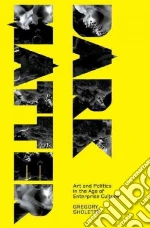 Title :
Dark Matter
Title :
Dark MatterAuthor: Sholette Gregory Publisher: Palgrave Macmillan Art is big business, with some artists able to command huge sums of money for their works, while the vast majority are ignored or dismissed by critics. This book shows that these marginalized artists, the "dark matter" of the art world, are essential to the survival of the mainstream and that they frequently organize in opposition to it. Gregory Sholette, a politically engaged artist, argues that imagination and creativity in the art world originate thrive in the non-commercial sector shut off from prestigious galleries and champagne receptions. This broader creative culture feeds the mainstream with new forms and styles that can be commodified and used to sustain the few artists admitted into the elite. This dependency, and the advent of inexpensive communication, audio and video technology, has allowed this "dark matter" of the alternative art world to increasingly subvert the mainstream and intervene politically as both new and old forms of non-capitalist, public art. This book is essential for anyone interested in interventionist art, collectivism, and the political economy of the art world. € 80,30
|
|
2007 |
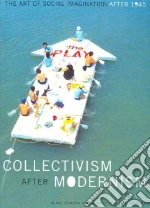 Title :
Collectivism After Modernism
Title :
Collectivism After ModernismAuthor: Stimson Blake (EDT), Sholette Gregory (EDT) Publisher: Univ of Minnesota Pr “Don’t start an art collective until you read this book.” —Guerrilla Girls
“Ever since Web 2.0 with its wikis, blogs and social networks the art of collaboration is back on the agenda. Collectivism after Modernism convincingly proves that art collectives did not stop after the proclaimed death of the historical avant-gardes. Like never before technology reinvents the social and artists claim the steering wheel!” —Geert Lovink, Institute of Network Cultures, Amsterdam
“This examination of the succession of post-war avant-gardes and collectives is new, important, and engaged.” — Stephen F. Eisenman, author of The Abu Ghraib Effect
“Collectivism after Modernism crucially helps us understand what artists and others can do in mushy, stinky times like ours. What can the seemingly powerless do in the face of mighty forces that seem to have their act really together? Here, Stimson and Sholette put forth many good answers.” —Yes Men
Spanning the globe from Europe, Japan, and the United States to Africa, Cuba, and Mexico, Collectivism after Modernism explores the ways in which collectives function within cultural norms, social conventions, and corporate or state-sanctioned art. Together, these essays demonstrate that collectivism survives as an influential artistic practice despite the art world’s star system of individuality. Collectivism after Modernism provides the historical understanding necessary for thinking through postmodern collective practice, now and into the future.
Contributors: Irina Aristarkhova, Jesse Drew, Okwui Enwezor, Rubén Gallo, Chris Gilbert, Brian Holmes, Alan Moore, Jelena Stojanovi´c, Reiko Tomii, Rachel Weiss.
Blake Stimson is associate professor of art history at the University of California Davis, the author of The Pivot of the World: Photography and Its Nation, and coeditor of Visual Worlds and Conceptual Art: A Critical Anthology. Gregory Sholette is an artist, writer, and cofounder of collectives Political Art Documentation/Distribution and REPOhistory. He is coeditor of The Interventionists: Users’ Manual for the Creative Disruption of Everyday Life.
“To understand the various forms of postwar collectivism as historically determined phenomena and to articulate the possibilities for contemporary collectivist art production is the aim of Collectivism after Modernism. The essays assembled in this anthology argue that to make truly collective art means to reconsider the relation between art and public; examples from the Situationist International and Group Material to Paper Tiger Television and the Congolese collective Le Groupe Amos make the point. To construct an art of shared experience means to go beyond projecting what Blake Stimson and Gregory Sholette call the “imagined community”: a collective has to be more than an ideal, and more than communal craft; it has to be a truly social enterprise. Not only does it use unconventional forms and media to communicate the issues and experiences usually excluded from artistic representation, but it gives voice to a multiplicity of perspectives. At its best it relies on the participation of the audience to actively contribute to the work, carrying forth the dialogue it inspires.” —BOMB € 26,80
|
|
|
2004 |
 Title :
The Interventionists
Title :
The InterventionistsAuthor: Thompson Nato (EDT), Sholette Gregory (EDT), Thompson Joseph (EDT), Mirzoeff Nicholas (EDT), Chavoya Ondine C. (EDT) Publisher: Mit Pr Art made to attach to buildings or to be given away? Wearable art for street demonstrations or art that sets up a booth at a trade show? This is the art of the interventionists, who trespass into the everyday world to raise our awareness of injustice and other social problems. These artists don't preach or proselytize; they give us the tools to form our own opinions and create our own political actions. The Interventionists, which accompanies an exhibit at MASS MoCA, serves as a handbook to this new and varied work. It's a user's guide to art that is exciting, provocative, unexpected, inspiring (artistically and politically), and fun. From Michael Rakowitz's inflatable homeless shelter and William Pope.L's "Black Factory" truck with pulverizer, gift shop, and giant inflatable igloo to the Biotic Baking Brigade's political pie-throwing, the art of The Interventionists surveys a growing genre and offers a guide for radical social action.The book classifies the artists according to their choice of tactics: the Nomads, who create mobile projects; Reclaim the Streets, artists who act in public places; Tools for Resistance: Ready to Wear, artists who produce fashion for political action; and the Experimental University, artists whose work engages pedagogy and theory. The accompanying text includes essays by noted scholars putting the work in a broader cultural and social context as well as texts by the artists themselves. € 34,70
|